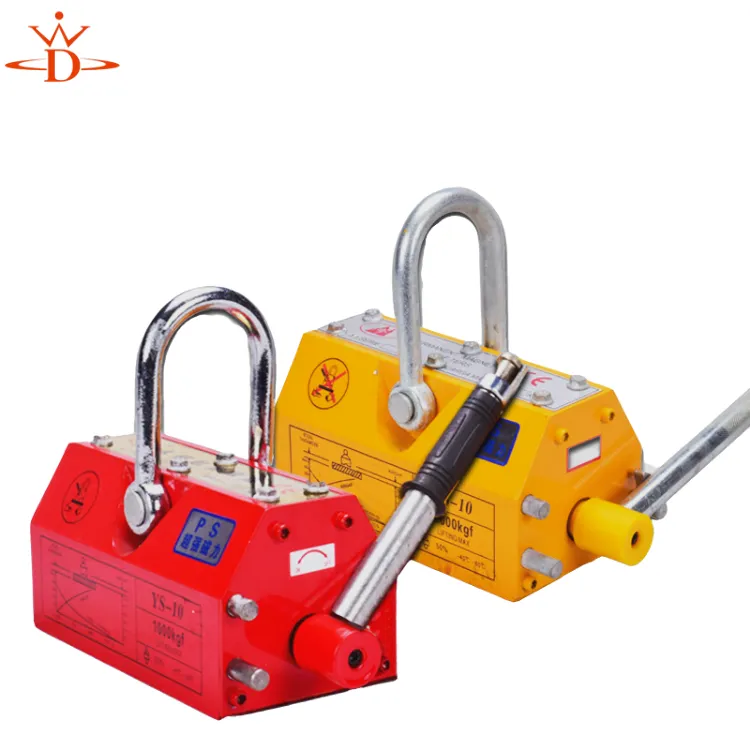Magnetic Lifters for Steel Plates Efficient Handling Solutions for Industrial Applications
The Advantages and Applications of Steel Plate Magnetic Lifters
Magnetic lifters have garnered significant attention in industries that require the handling and transportation of heavy steel plates. As pivotal tools in material handling, these lifters are specifically designed to elevate, transport, and position steel plates effortlessly, leveraging the principles of magnetism. This article explores the advantages and applications of steel plate magnetic lifters, highlighting why they have become indispensable in various sectors.
What are Magnetic Lifters?
Steel plate magnetic lifters are devices that use powerful magnets to grab and lift ferrous materials, primarily steel plates. These lifters are structured with strong permanent magnets that can securely hold objects weighing several tonnes. When activated, the magnets create a magnetic field that adheres to the steel plate without the need for additional clamps or mechanical attachments. This innovation in material handling has revolutionized how industries manage heavy loads, ensuring efficiency and safety.
Key Advantages
1. Efficiency One of the most notable advantages of magnetic lifters is their ability to enhance operational efficiency. Unlike traditional chains and slings, which can be time-consuming to attach and detach, magnetic lifters allow for quick engagement and release. This speed translates to shorter loading and unloading times, making operations more streamlined.
2. Safety Magnetic lifters are also designed with safety in mind. They are equipped with safety features such as a safety lock mechanism that prevents accidental release. Additionally, they minimize the risk of damage to materials, as they reduce the need for mechanical attachments that could scratch or dent surfaces.
3. Reduced Labor Costs By automating the lifting process, magnetic lifters allow workers to handle larger loads with less physical effort. This reduction in manual labor can lead to decreased risk of injuries and lower labor costs, as fewer workers may be needed for heavy lifting tasks.
4. Versatile Application Steel plate magnetic lifters are suitable for a wide range of applications across various industries. From manufacturing to construction, they can handle sheets, plates, and blocks of steel in various sizes. Their versatility enables them to be utilized in warehouses, shipping yards, and manufacturing plants, where heavy materials are frequently moved.
steel plate magnetic lifter

5. Portability Many magnetic lifters are compact and lightweight, allowing for easy transportation between job sites. Their portable nature makes them ideal for construction projects, where equipment and tools must be moved frequently. Operators can easily carry them without needing cranes or forklifts.
Applications Across Industries
1. Manufacturing In manufacturing environments, steel plate magnetic lifters are commonly used to move raw materials and components in assembly lines. They assist in lifting heavy parts, improving production speeds and reducing downtime.
2. Construction The construction industry often requires the movement of large steel plates for structural frameworks. Magnetic lifters allow for the safe and efficient handling of these materials, enabling quicker project timelines and reducing the physical strain on workers.
3. Shipping and Warehousing In shipping yards and warehouses, magnetic lifters simplify the loading and unloading of heavy steel products. They allow warehouse workers to efficiently move plates from storage to shipping areas, optimizing space and reducing labor costs.
4. Metal Fabrication In metal fabrication shops, where precise cuts and manipulations are essential, magnetic lifters support the handling of sheets and scrap metal. They enable precise positioning during cutting and welding processes.
5. Automotive Industry The automotive sector utilizes magnetic lifters to handle steel parts during assembly. Their reliability and efficiency in lifting heavy components contribute to smooth production flows.
Conclusion
Steel plate magnetic lifters stand out as essential tools in modern industrial operations. Their ability to enhance efficiency, improve safety, reduce costs, and enable versatile applications has made them an integral part of the material handling landscape. As industries continue to evolve, the demand for such innovative solutions will undoubtedly grow, further consolidating the role of magnetic lifters in facilitating heavy lifting tasks. Whether in manufacturing, construction, or shipping, these devices are key players in the quest for seamless and efficient workflows.
-
Permanent Magnetic LiftersNewsNov.01,2024
-
Operations with an Adjustable CraneNewsNov.01,2024
-
Machine Moving SkatesNewsNov.01,2024
-
Industrial Lifting MagnetsNewsNov.01,2024
-
Effective Machinery MovingNewsNov.01,2024
-
Adjustable Gantry CraneNewsNov.01,2024
-
Unlock the Power of Lifting with Permanent Magnetic LiftersNewsOct.11,2024
